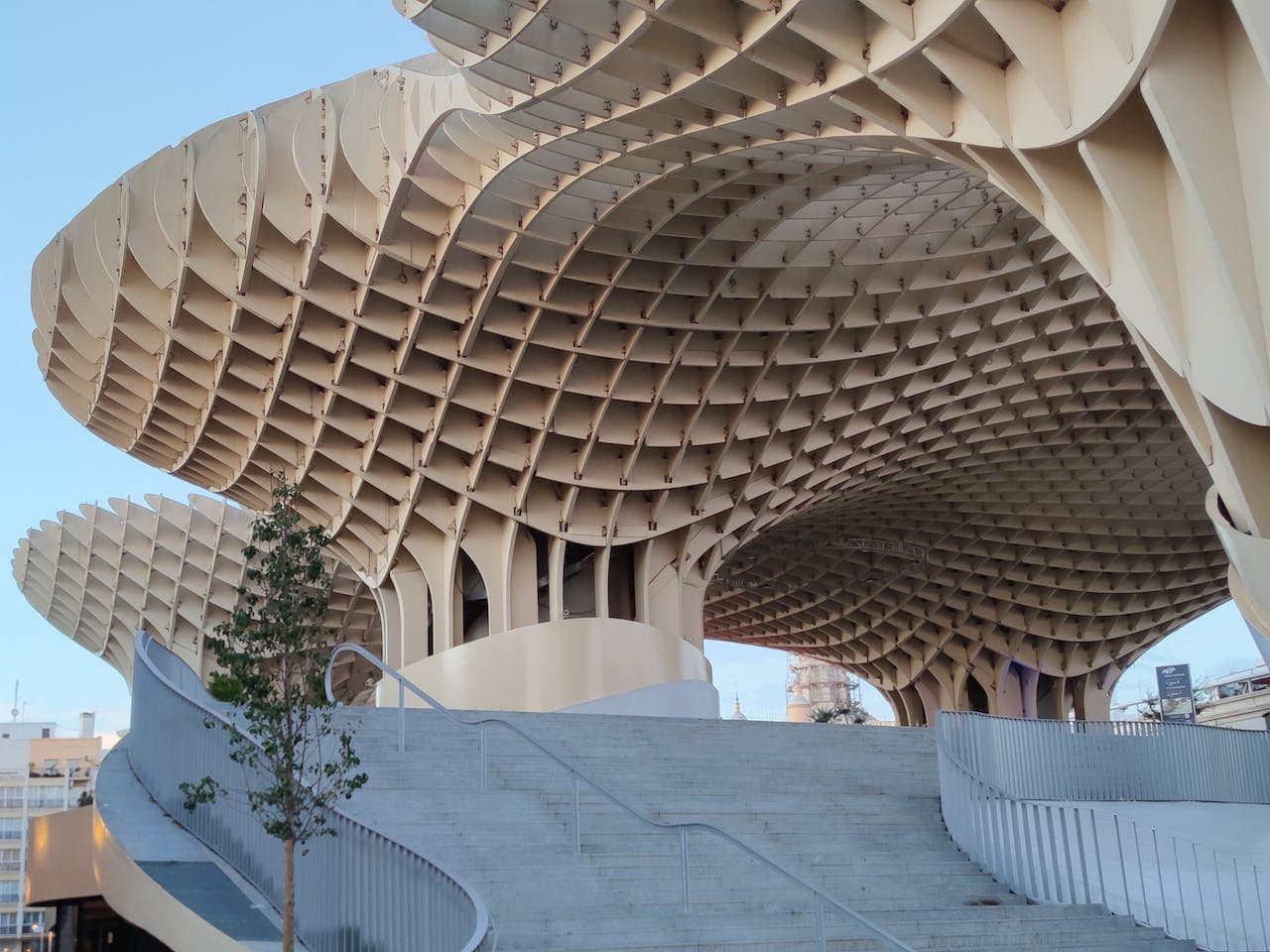As we use this approach, design seems to have a more flexible, collaborative, and sustainable future.
Imagine entering a world where the lines defining architecture are continually being drawn, where structures curve and twist like living things, and where skylines look like passages from a sci-fi book. In the field of parametric design, conventional architectural norms are not merely bent; they are entirely rethought. In this context, mathematics serves as the architects’ canvas and algorithms as their paintbrush. Each curve, angle, and structural element is the outcome of a meticulously composed symphony of design and data.
One algorithm at a time, let’s discover the five essential ways parametric design is transforming the architectural sector as we delve into this fascinating area.
1. Enhanced Design Flexibility
Because of its immense design flexibility, parametric design has the potential to revolutionize architecture. This method enables architects to experiment with a wide range of design variables controlled by algorithms. Imagine being able to adjust dimensions, forms, and spatial connections with a few clicks. This is more than just making visually appealing structures; it is about pushing the limits of what is possible in architecture.
Architects can use parametric design to investigate a wide range of design options that were previously unimaginable or too hard to handle manually. It enables the design of more adaptable, responsive, and personalized structures that really meet the changing needs of customers and communities. This amount of flexibility and experimentation is transforming the way architects approach design, resulting in creative ideas, effective renovations and spectacular architectural achievements.
2. Efficient Response to Design Changes
The dynamic nature of parametric design is a major asset in the ever-evolving world of architecture. When clients propose changes, which is a common occurrence in architectural projects, parametric design comes to the rescue. Instead of delving back into the depths of traditional design processes, architects can simply adjust certain parameters in their model. These changes then cascade through the entire design, updating every related element automatically. This means that revisions can be made quickly and accurately, saving a tremendous amount of time and reducing the potential for human error.
Additionally, this approach allows for more iterative design processes, where architects can continuously refine and evolve their designs based on feedback, new data, or changing requirements. The efficiency and adaptability provided by parametric design not only streamline the design process but also enhance the quality and precision of the final architectural product.
3. Integration of Complex Geometries with 3D Tools

The use of 3D tools epitomizes the capability of parametric design in handling complex geometries. As an example, genius Grasshopper 3D, integrated within Rhino, is a visual programming environment that allows architects to build and manipulate complex forms with ease. This tool transforms intricate designs from mere ideas into feasible architectural solutions. For instance, with the use of modern design techniques, architects can now produce intricate, organic shapes that resemble natural forms, which was previously quite difficult.
Such tools make it simple to develop models that are capable of changing and adapting in response to a variety of characteristics, including environmental conditions or user-specific requirements. This degree of design intricacy expands the lexicon of architecture and allows architects to experiment with novel approaches to construction and urban planning. Not only is aesthetics important, but so is making structures more responsive, useful, and harmonious with their environment.
4. Sustainable and Optimized Designs
In architectural design, sustainability is becoming a more significant factor, and parametric design is essential. Because parametric design makes exact calculations and simulations possible, architects can optimize every aspect of a building, from energy efficiency to material utilization. This method is critical for reducing the environmental impact of new structures. For example, parametric tools can model sunlight and shadow patterns to improve building orientation and window location for energy efficiency.
They can also be utilized to create building envelopes that enhance thermal efficiency while reducing material waste. In an era where climate change and resource conservation are top priorities, parametric design’s capacity to produce more sustainable, efficient, and environmentally responsible structures is crucial.
5. Enhanced Collaboration Across Disciplines
The use of parametric design promotes increased cooperation between engineers, architects, and other building partners. All parties involved can work together continuously and provide their expertise in real time by using a common parametric model. This cooperative method guarantees that architectural solutions are not just one-of-a-kind but also practically and structurally robust.
An integrated and comprehensive building process can be achieved, for instance, by having engineers assess and remark in real time on the structural implications of a design revision. This collaboration not only improves the quality of the finished product but also speeds up the design and construction processes, reducing errors, misunderstandings, and delays. Parametric design functions as a unifying language that brings together disparate skill sets and points of view in an area where interdisciplinary collaboration is required.
Not only a method, parametric design is a new way of thinking about architecture. It provides a degree of dynamism, efficiency, and invention that was previously unattainable. As we use this approach, design seems to have a more flexible, collaborative, and sustainable future. The possibilities are practically limitless when it comes to parametric design.


Join the conversation!